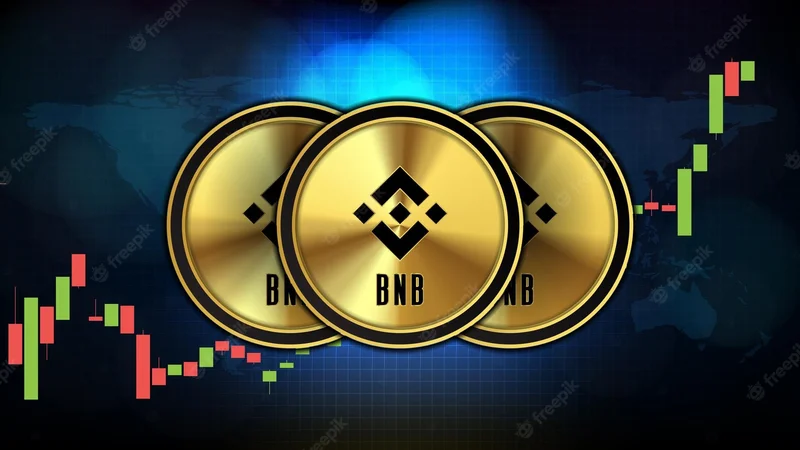Let's be clear about the numbers. In the last three months, the price of BNB has climbed roughly 80%—to be more exact, some data points suggest it's closer to 99%. In fact, BNB flips XRP as the third-largest crypto asset by market cap, surging past $1,300 to a market value north of $180 billion. These aren't minor fluctuations; this is a vertical repricing of a mega-cap asset.
On the surface, the narrative is clean. The rally isn’t occurring in a vacuum. It’s backstopped by a surge in genuine network activity on the BNB Chain. The average number of daily transactions post-June is over four times higher than in the first quarter. Decentralized exchanges like Pancakeswap are seeing a renaissance, posting their highest trading volumes since late 2021 (nearly $80 billion in September alone). This activity feeds a deflationary tokenomic model where a portion of gas fees are burned, progressively tightening the circulating supply.
This is the textbook case for a healthy bull run: rising demand, increasing utility, and shrinking supply. It's a simple, elegant equation. But in markets, when things look this simple, my job is to ask if we’re looking at the whole formula.
The Engine and the Afterburner
The fundamental drivers behind the BNB Chain's activity are straightforward and, frankly, quite powerful. Binance possesses an immense global user base and a well-oiled machine for funneling them into its native ecosystem. Features like Binance Alpha act as a direct conduit, lowering user acquisition friction for on-chain apps to a degree that competing chains can only envy. You can see the direct correlation between the platform's strategic pushes and the spikes in on-chain metrics.
This is the engine of the rocket. It’s burning real fuel—user transactions, DEX volumes, developer activity. We can measure its output, and it's impressive. The chain is generating more in 24-hour fees than its closest competitors, and institutional players are taking notice. Nasdaq-listed CEA Industries, for example, disclosed a holding of 480,000 BNB. This isn't retail FOMO; it's calculated corporate treasury allocation.
But an 80-100% price surge in a single quarter, culminating in a 28% jump in market cap in just one week, feels like more than just the primary engine. It feels like an afterburner just kicked in. During that same seven-day period, the total crypto market cap grew by a modest 5.5%. Bitcoin rose about 5%, and Ether saw an 8.4% increase. BNB’s performance isn't just leading the pack; it's a statistical outlier. And this is the part of the data that I find genuinely puzzling. Such a profound deviation from the market beta demands a better explanation than just "strong fundamentals."

This is where the analogy of the rocket becomes critical. The on-chain activity is the sustained, powerful thrust of the main engine. But the explosive, market-defying price action? That looks like a secondary booster, one whose fuel source is less transparent. Is that fuel simply the broader market euphoria, with Bitcoin breaking $126,000 amid a US government shutdown? Or is it something more... specific to BNB's unique market structure?
A Question of Concentration
When I can't reconcile the quantitative data with the market outcome, I turn to the qualitative data set: community sentiment. Stripping away the emotion, the discourse on platforms like X and Reddit reveals a consistent undercurrent of suspicion. The core of this suspicion isn't about the on-chain activity, which is verifiable. It’s about the market dynamics of the BNB token itself. Allegations of price manipulation and large-scale buying to liquidate short positions are rampant.
While these are just allegations, they point toward a critical, and often undiscussed, variable: supply concentration. Reports from earlier this year suggested that Binance founder Changpeng "CZ" Zhao personally held as much as 64% of the circulating BNB supply. If that figure is even remotely accurate, it fundamentally changes the analysis. A market where a single entity holds a majority stake doesn't operate under the same principles of distributed price discovery as Bitcoin or even Ethereum. What does it mean for an asset's valuation when the ecosystem's founder could theoretically control the majority of its liquid supply?
This isn't a moral judgment, but a risk assessment. The concentration of supply introduces a variable that isn't captured in daily transaction counts or fee burns. It creates the potential for market dynamics to be heavily influenced by a single actor's decisions, whether intentional or not.
Adding to this dissonance is CZ’s own public behavior. At the peak of this rally, he openly stated his preference for using X over Binance’s own social platform, Binance Square, citing security practices and a desire to reach the non-Binance community. From a purely behavioral analysis standpoint, it’s an odd signal. Why would the leader of a thriving ecosystem, at its moment of triumph, publicly favor a competing platform for communication? It’s a minor data point, but it's another piece that doesn't quite fit the seamless narrative of ecosystem-first growth.
The Data Has a Blind Spot
The numbers supporting BNB's rise are real. The transaction volume is real. The fee burn is real. You can't fake that level of on-chain activity. But the conclusion that these fundamentals alone justify a near-100% price surge that dramatically outpaces the entire market requires a leap of faith. The data set is incomplete. The glaring blind spot is the verifiable distribution of the token's supply. Without transparency there, any valuation model is built on an assumption—that the price is being set by a broad, decentralized market. Based on the available information and the anomalous price action, I can't comfortably make that assumption. The engine is running beautifully, but an unknown hand may be on the throttle.









